A Classic New Orleans Shrimp Victoria Recipe
Shrimp Victoria is a delectable dish that encapsulates the essence of coastal cuisine. It marries succulent shrimp with a creamy, flavorful sauce. Originating from the southern United States, particularly Louisiana, this dish has found its place on menus across the country and beyond, celebrated for its rich flavors and elegant presentation.
At the heart of Shrimp Victoria lies the star ingredient: fresh, plump shrimp. These crustaceans are typically sautéed or grilled to perfection, ensuring a tender texture and a delicate flavor that shines through in every bite. The shrimp’s natural sweetness pairs harmoniously with the other components of the dish, creating a symphony of flavors that dance on the palate.
One of Shrimp Victoria’s defining elements is its luscious sauce, which elevates the dish to new heights of indulgence. The sauce is often a velvety blend of cream, butter, garlic, and a hint of Cajun seasoning, imbuing the shrimp with a luxurious richness and a subtle kick of spice. This creamy sauce coats the shrimp and serves as a decadent accompaniment, begging to be savored with each mouthful.
To complement the shrimp and sauce, Shrimp Victoria is often served atop a bed of fluffy white rice or nestled alongside a mound of buttery mashed potatoes. These starches provide a comforting foundation for the dish, soaking up the savory sauce and enhancing its decadent qualities. Additionally, a sprinkling of fresh herbs, such as parsley or chives, adds a pop of color and a burst of freshness, further enhancing the dish’s visual appeal and flavor profile.
While Shrimp Victoria is undeniably luxurious, it also boasts a versatility that makes it suitable for various occasions. Whether served as an elegant main course at a dinner party or as a comforting weeknight meal for the family, this dish never fails to impress. Its combination of succulent shrimp, creamy sauce, and comforting accompaniments makes it a true crowd-pleaser, capable of satisfying even the most discerning palates.
Moreover, Shrimp Victoria offers ample opportunity for customization, allowing chefs to put their spin on the classic recipe. Some may add additional ingredients, such as diced tomatoes, bell peppers, or mushrooms, to enhance the dish’s complexity and depth of flavor. Others may choose to experiment with different seasonings or cooking techniques, infusing the dish with their own unique flair.
In essence, Shrimp Victoria is a timeless classic that continues to captivate diners with its irresistible combination of flavors and textures. Whether enjoyed on a balmy summer evening or a chilly winter night, this dish never fails to evoke a sense of warmth and satisfaction, making it a beloved favorite in homes and restaurants.
Shrimp Victoria History
The history of Shrimp Victoria is rooted in the rich culinary traditions of the southern United States, particularly Louisiana, where seafood reigns supreme. While specific details regarding its origin are somewhat elusive, the dish likely emerged in the mid to late 20th century, reflecting the region’s love affair with fresh shrimp and rich, flavorful sauces.
Louisiana’s vibrant culinary landscape, influenced by a blend of French, Spanish, African, and Native American cuisines, provided the perfect breeding ground for the creation of Shrimp Victoria. With abundant fresh Gulf shrimp and a wealth of culinary expertise, it’s no surprise that this dish came to fruition in this coastal haven.
When I did a little research, I found it is from New Orleans and may have originated at the famous Brennan’s restaurant. I did find a reference to it saying it was also served at Commander’s Palace, another famous dining institution where I’ve had the pleasure of eating.
Brennans’ menu is described as SHRIMP VICTORIA—Gulf shrimp sautéed in butter with fresh basil and mushrooms served in a light cream sauce with parsley rice.
The name “Shrimp Victoria” itself conjures images of elegance and sophistication, evoking a sense of regal charm that befits its decadent nature. While the exact origins of the name remain unclear, it’s possible that the Victorian era, a period synonymous with opulence and refinement, inspired it.
Over the years, Shrimp Victoria has evolved and adapted to suit changing tastes and preferences. While the core components of succulent shrimp and creamy sauce remain constant, variations on the dish have emerged, incorporating different ingredients and cooking techniques to create unique interpretations.
Today, Shrimp Victoria can be found on menus across the country and beyond, beloved for its luxurious flavors and elegant presentation. Whether served in fine dining establishments or enjoyed at home with family and friends, this dish continues to captivate diners with its irresistible allure, carrying on a legacy that pays homage to Louisiana’s rich culinary heritage.
April 1, 2014 Shrimp Victoria Recipe Update
I prepared this recipe last night after posting it over 10 years ago. It was good, but I thought it was a little bland, and both my kids agreed with me.
So, I’m going to make a few changes to make it better based on what I’ve learned over the past few years, including sauteing the onions and mushrooms before adding the shrimp stock.
I would also suggest trying to spice it up by adding a few drops of hot sauce, like Sriracha. My wife told me her mother prepared a similar dish she called Shrimp Louisiana, but all she can remember about it was the overabundance of sherry.
Don’t overdo it, but deglazing the pan with a little sherry or Marsala wine after sauteing the onions might be worth a try.
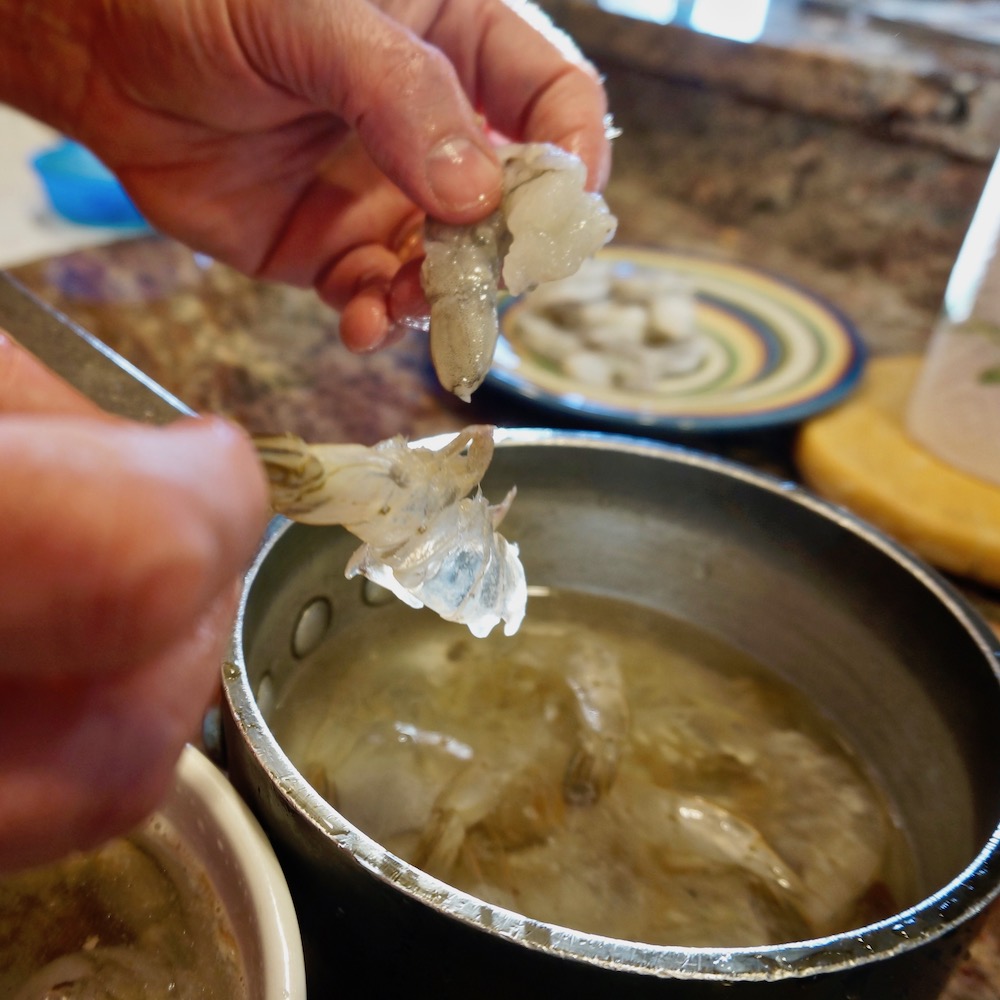
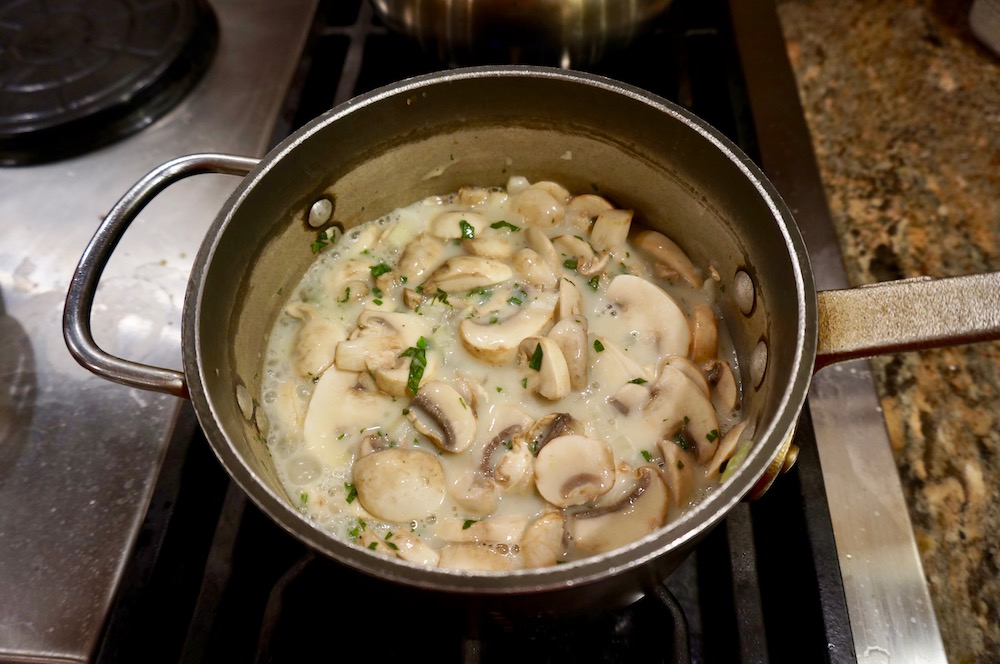
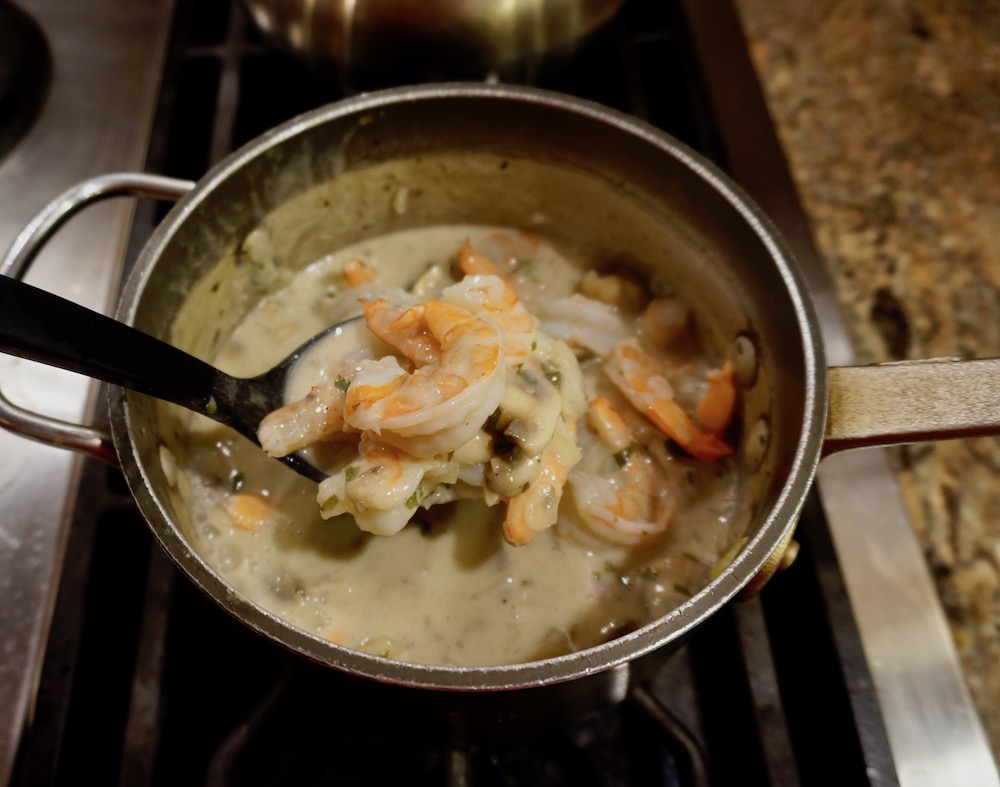
How do you know when shrimp are done cooking?
Shrimp Victoria Recipe
Ingredients
- 1 cup shrimp stock can be made with the shells from the shrimp you are using
- 2 tablespoons butter
- 2 tablespoons all-purpose flour
- ½ cup sour cream
- 1 tablespoon olive oil
- 1 small onion minced finely
- ½ pound mushrooms
- 2 tablespoons fresh basil chopped
- ¼ cup light cream
- 1 pound shrimp medium sized, peeled and deveined
- salt & freshly ground pepper to taste
Instructions
- Start by heating up the shrimp stock in a medium sized sauce pan. Bring it to a slow boil.
- While the stock is heating up, you can start preparing the roux (butter and flour) in another pan.
- Heat up a small sauce pan over medium heat. Melt the butter and then add the four. Using a whisk and stirring continuously, blend the flour and butter together until it forms a smooth, pale blonde roux and reserve.
To Prepare the Sauce
- Heat a a saucepan over medium heat. When hot, add the olive oil and the minced onion. Saute until the onions are translucent, 3 minutes.
- Add the mushrooms and cook until they release their moisture and begin to brown.
- When the stock is boiling, add the reserved roux and stir well to combine. Add this mixture to the onions and mushrooms.
- Add the sour cream and again stir well to combine.
- Add the fresh basil, reduce heat and simmer for 5 minutes.
- Add the light cream and continue simmering until the sauce begins to thicken. If you want to spice up this dish to give it some pizzazz, now's the time to add a few drops of hot sauce. You could also have some at the table to serve those who like it hot.
- Add the shrimp and cook until the shrimp are pink about three minutes.
- Season with salt and pepper and serve over rice.

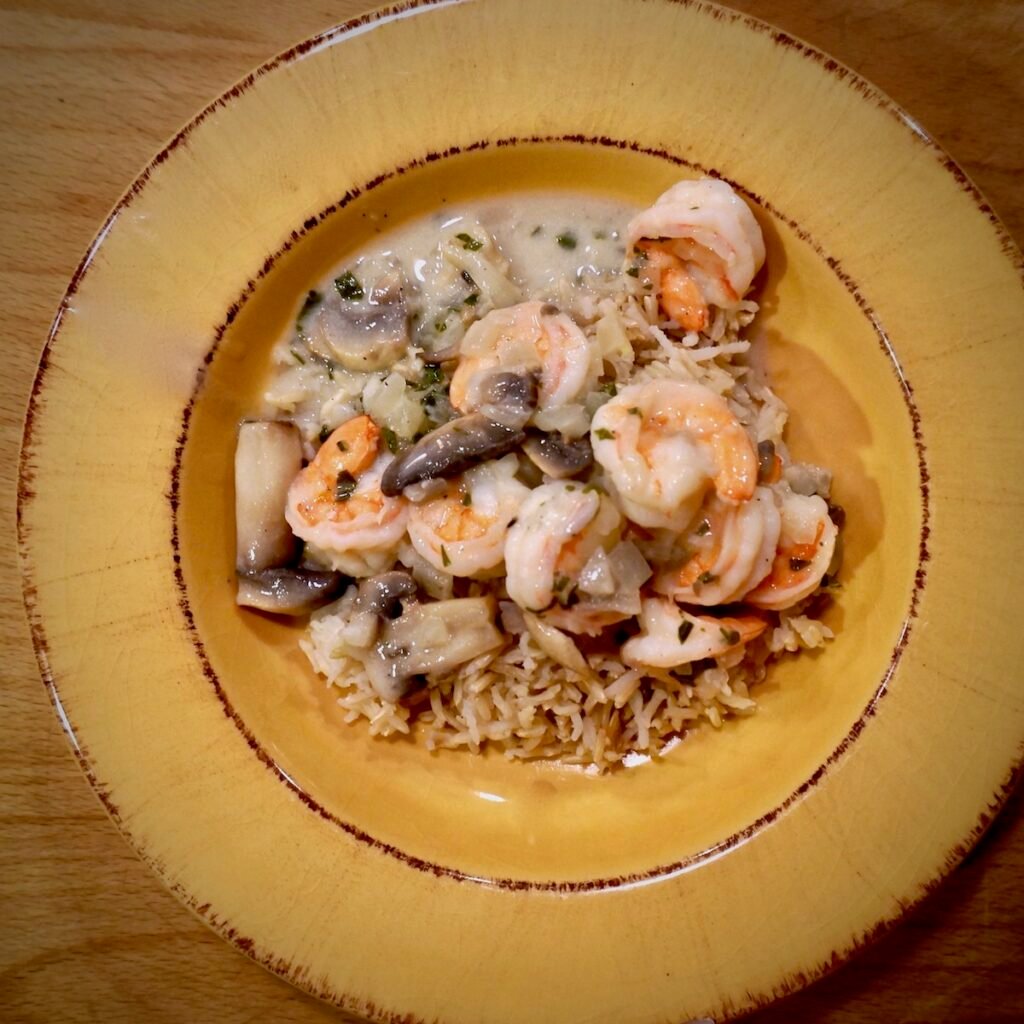





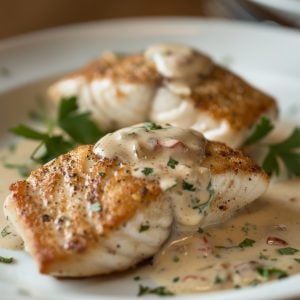
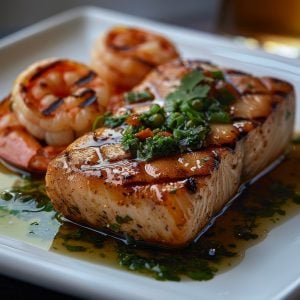

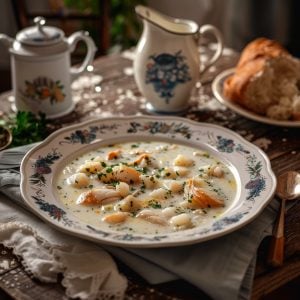
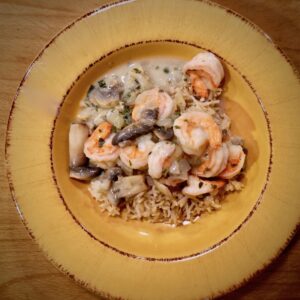





4 Responses
Sounds really good. I would like the wine deglazing sauce also. If I added coconut milk and curry; do you think it would work?
I added a splash of dry sherry with a dash of sriacha………wonderful
A suggestion: the original recipe from Brennan’s includes a pretty substanial amount (2T) of homemade Worcestershire sauce. Most of us don’t have the ambition to ferment anchovies, etc., so good ol’ Lea and Perrin’s is fine (I use significantly less than the recipe calls for; it’s potent & I suspect the homemade version is less so)—but it’s a pretty critical ingredient, IMO. It just may be that je ne sais quoi that you’re seeking. I also add a little pinch of cayenne; can’t recall if it’s original to the recipe or if I modified, but it works.
Hi Betsy, thanks for these tips. I’ll give them a try next time I prepare this dish. Thanks.